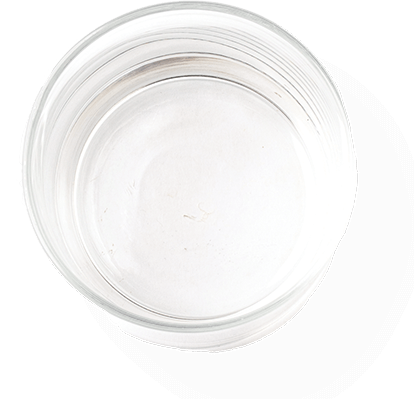
Your Child Feels Proud To Make Choices.
At this age, your child needs your help to LEARN TO MAKE HEALTHY CHOICES.
WHAT TO OFFER:
- Your child will eat more like you do. You don’t need to make something special for them.
- You decide what healthy foods to offer. Your child decides which of these foods to eat and how much to eat.
- Now it’s time to switch to low-fat milk and yogurt.
HOW TO OFFER:
- Give your child a choice when possible. Ask them, “Do you want peas or carrots with dinner?” or “Would you like apple slices or peaches for a snack?”.
- If your child doesn’t like a new food right away, that’s okay! Offer it again at another time. It might take 10 or more times before they decide to try it.
WHEN TO OFFER:
- Routines are important. Offer 3 meals and 2 or 3 snacks at about the same times every day.
- Your child may not eat a meal or a snack. They will eat more on some days than others.
- Provide only water between meals and snacks. This way your child will be hungry – but not too hungry – when it is time for the next meal or snack.
- WIC food benefits include 100% juice—no added sugar. Limit to ½ cup a day.
WHERE TO OFFER:
- Your child learns by watching you. Sit and eat the same foods together at the table.
- Your child can help with meals by deciding which vegetables to have for dinner, rinsing fruits and vegetables, putting things into the trash, wiping off the table and tearing lettuce or greens for salad.


Here are some examples of what meal and snack portion
sizes might look like:
Your child may eat more or less than these amounts.
Breakfast
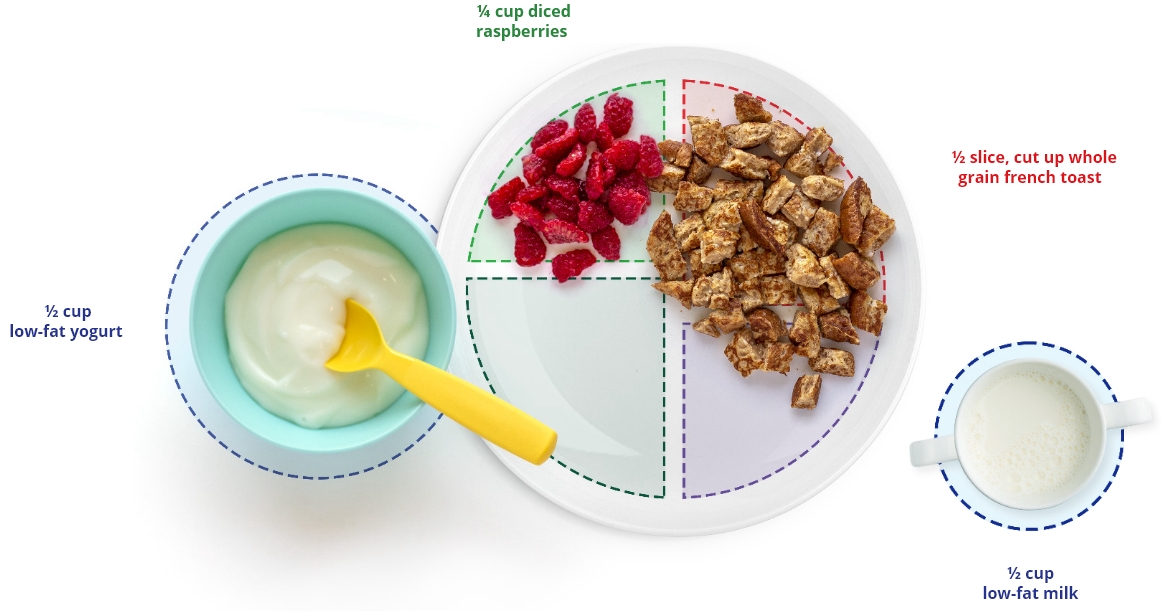
Morning Snack
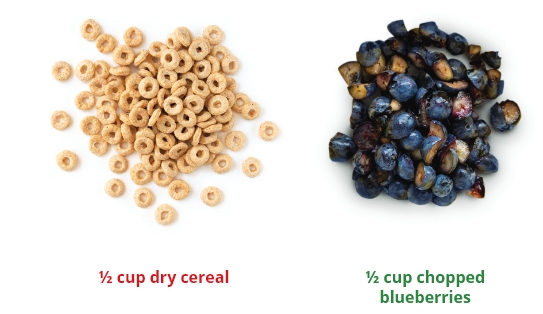
Lunch
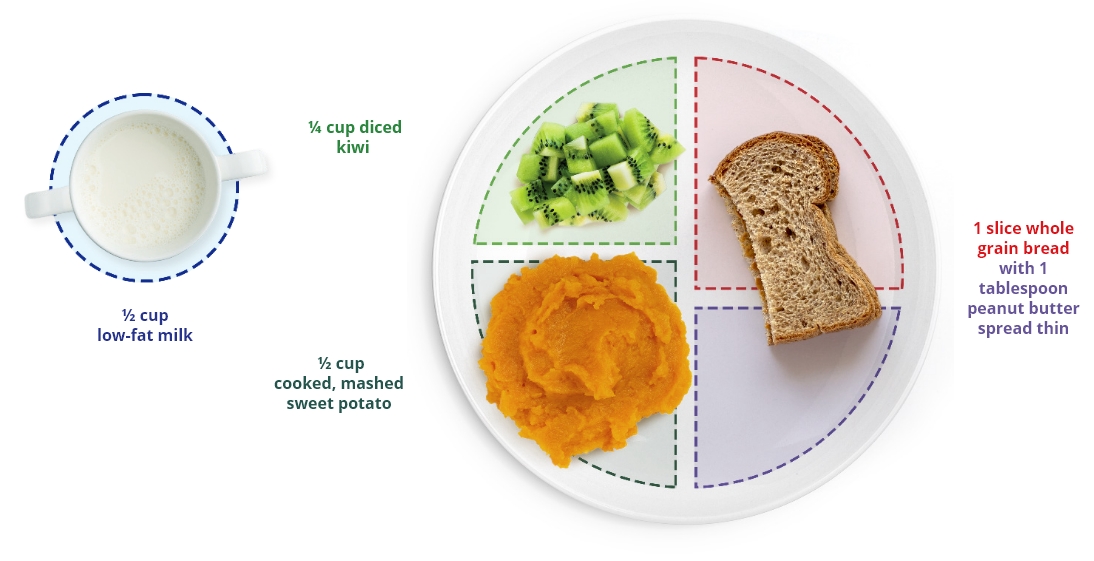
Afternoon Snack
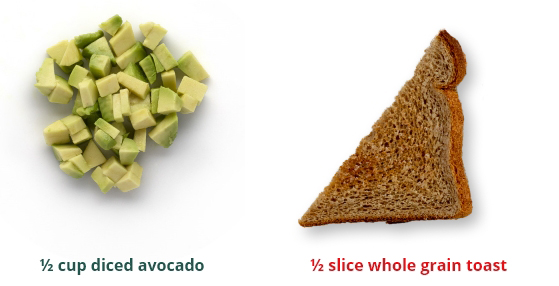
Dinner
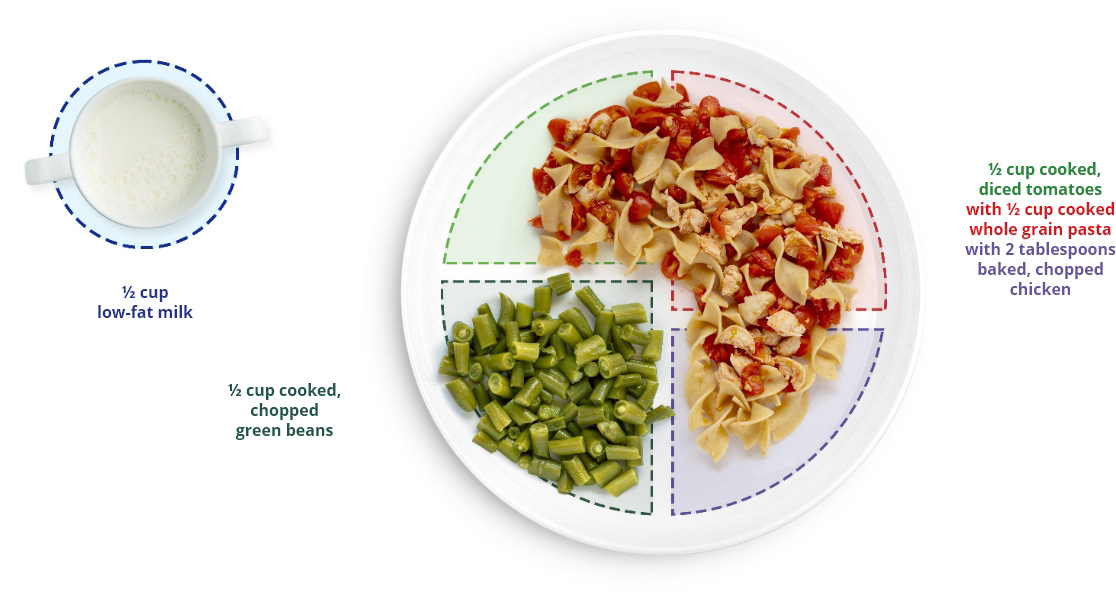

Fruits
 2 servings a day
(1 cup total)
1 serving = ½ cup
2 servings a day
(1 cup total)
1 serving = ½ cup
Cooked or soft, raw fruit.
Mashed, sliced or chopped.
Offer a variety: red, yellow, orange, blue and green.
Vegetables
 3 servings a day
(1½ cup total)
1 serving = ½ cup
3 servings a day
(1½ cup total)
1 serving = ½ cup
Raw or cooked, mashed, sliced or chopped veggies.
Offer a variety: dark green, orange, red, yellow and purple.
Grains
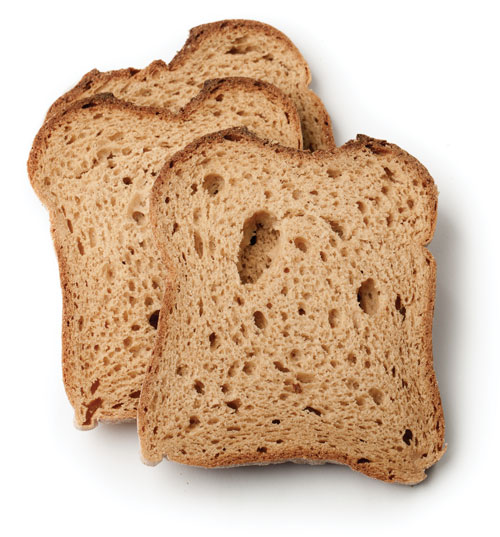 6 servings a day
(3 ounces total)
1 serving = ½ ounce
6 servings a day
(3 ounces total)
1 serving = ½ ounce
½ slice whole grain bread or tortilla.
¼ cup rice or noodles.
½ cup dry or ¼ cup cooked cereal.
Proteins
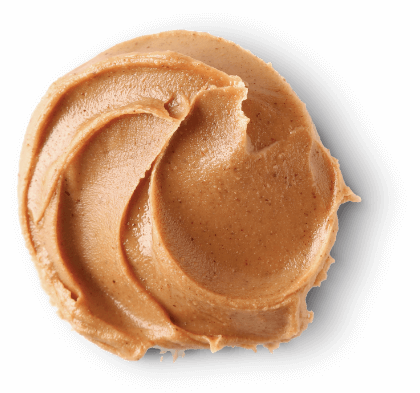 2 servings a day
(2 ounces total)
1 serving = 1 ounce
2 servings a day
(2 ounces total)
1 serving = 1 ounce
Size of 3 dice-sized cubes cooked lean meat, poultry or seafood.
1 egg.
¼ cup cooked beans, peas or tofu.
1 tablespoon peanut butter.
Dairy
 4 servings a day
(2 cups total)
1 serving = ½ cup
4 servings a day
(2 cups total)
1 serving = ½ cup
Low-fat milk.
Yogurt.
Cheese.
Other option: Soy milk.

Look What I Can Do!
- Your child can feed themself with a spoon or a fork. They may still use fingers as they learn.
- Run, jump and climb. Be active together for 30-60 minutes every day.
- Your child learns new words from you. Talk, sing and read to them so they can learn more. Teach your child the names and colors of foods and other objects.
- Track your child’s development with easy-to-use checklists, visit

Keep Me Safe
and Healthy
Your child’s learning to chew food properly. Please don’t give foods your child could choke on like whole nuts, hard candies. Chop round food into bite-sized pieces like grapes, hot dogs.
Help your child brush their teeth at least twice a day with a small, soft toothbrush. Use fluoride toothpaste, about the size of a grain of rice. Be sure to schedule a dental visit every 6 months.
Too much TV, phone or time on other devices can lead to poor sleep, less playing and learning. It’s best to limit TV or other devices to 1 hour a day. Choose educational shows that are right for your child’s age. Watch TV with your child; they learn when you talk to them about what they watch.





